Crown and bridge restoration is one of the most common and important procedures in modern dentistry, widely used to restore damaged, fractured, or missing teeth. With the advancement of dental technology, crown and bridge restoration not only effectively restores tooth function but also improves chewing, aesthetics, and occlusion, thereby enhancing the patient’s quality of life. As a vital aspect of dental care, crown and bridge restorations provide a relatively simple and effective solution for tooth loss, contributing significantly to the overall field of restorative dentistry.
This article will provide a detailed exploration of crown and bridge restoration, covering its concept, classification, indications, treatment process, technological advancements, common issues, and future trends. It aims to offer a comprehensive understanding for both dental professionals and patients.
1. Basic Concepts of Crown and Bridge Restoration
1.1 Definition of Crown and Bridge Restoration
Crown and bridge restoration involves the creation of artificial prosthetic devices to replace damaged, missing, or fractured teeth. A crown and bridge restoration typically consists of two parts:
- Crown: A crown is primarily used to restore the structure or appearance of a damaged or worn-down natural tooth. It is placed over a tooth to restore its function and aesthetics.
- Bridge: A bridge is used to replace missing teeth. It typically consists of two healthy supporting teeth (called abutment teeth) and one or more artificial teeth (pontics) placed in between. A bridge helps restore the function of missing teeth, including the ability to chew.
The primary goal of crown and bridge restoration is to restore the function of the mouth, improve aesthetics, and ensure proper occlusion. It is an important procedure in restorative dentistry and is widely used in cases of tooth loss.
1.2 Historical Background of Crown and Bridge Restoration
The use of crown and bridge restorations dates back to the early 20th century. Early crowns and bridges were made primarily from metal, and while they were functional, they lacked aesthetic appeal. Over time, with advancements in materials science, crown and bridge restoration methods have evolved significantly. Modern techniques involve not only improved precision but also enhanced aesthetic outcomes. Materials such as porcelain-fused-to-metal (PFM) and full ceramic crowns have become more popular, allowing for restorations that more closely resemble natural teeth.
1.3 Advantages of Crown and Bridge Restoration
The advantages of crown and bridge restorations are evident in several key areas:
- Restoring Tooth Function: Crown and bridge restorations effectively restore the chewing and biting functions of missing or damaged teeth, helping patients to eat normally.
- Improving Aesthetics: Modern crown and bridge materials, such as full porcelain crowns, provide excellent aesthetic results and can closely match the natural appearance of teeth.
- Ensuring Stable Occlusion: By restoring the missing or damaged teeth, crown and bridge restorations help improve occlusal relationships, reducing issues caused by misalignment.
- Durability: Crown and bridge restorations are highly durable and can maintain their function and appearance for many years with proper care.
2. Classification of Crown and Bridge Restorations
Crown and bridge restorations can be classified in various ways, depending on the materials used, the location of the restoration, and the design of the prosthetic. Below are some common classifications.
2.1 Classification Based on Materials
The choice of materials for crowns and bridges plays a crucial role in determining the restoration’s strength, durability, and aesthetic outcomes. Common materials include:
- Metal Crowns and Bridges: Metal crowns and bridges are traditional restorations that offer excellent strength and durability, but they lack aesthetic appeal. They are typically used for posterior teeth where appearance is less critical.
- Porcelain-Fused-to-Metal Crowns and Bridges (PFM): This type of restoration combines the strength of metal with the aesthetics of porcelain. The metal framework provides strength, while the porcelain covering mimics the appearance of natural teeth. It is commonly used for both anterior and posterior teeth.
- All-Ceramic Crowns and Bridges: All-ceramic restorations are made entirely from porcelain or other ceramic materials. These offer excellent aesthetics, as they closely resemble natural teeth. They are especially suitable for anterior teeth but may not have the same strength as metal-based restorations.
- Zirconia Crowns and Bridges: Zirconia is a highly durable material that combines excellent strength with aesthetic qualities. It is often used for both anterior and posterior teeth, providing a highly durable and aesthetic solution for crown and bridge restorations.
2.2 Classification Based on the Restoration Location
Crown and bridge restorations can also be classified based on the location of the restoration in the mouth:
- Single Crown Restoration: A single crown is used to restore a single damaged or decayed tooth. This is one of the most common types of crown restoration, particularly when a tooth has undergone significant decay or trauma.
- Dental Bridge Restoration: A dental bridge is used to replace one or more missing teeth. A bridge is supported by healthy teeth on either side of the gap (abutments), with one or more artificial teeth (pontics) filling the space.
- Full Mouth Crown and Bridge Restoration: For patients with widespread tooth damage or loss, full mouth restoration using crowns and bridges can help restore both function and aesthetics. This approach typically involves restoring all or most of the teeth in the upper and lower arches.
2.3 Classification Based on the Design of the Bridge
- Fixed Bridge: A fixed bridge is a permanent restoration that is securely bonded to the abutment teeth and cannot be removed by the patient. It is used for cases of single or multiple missing teeth.
- Removable Bridge: A removable bridge can be taken out of the mouth by the patient. It is usually recommended for patients who are unable to undergo a fixed bridge procedure, often due to insufficient healthy abutment teeth.
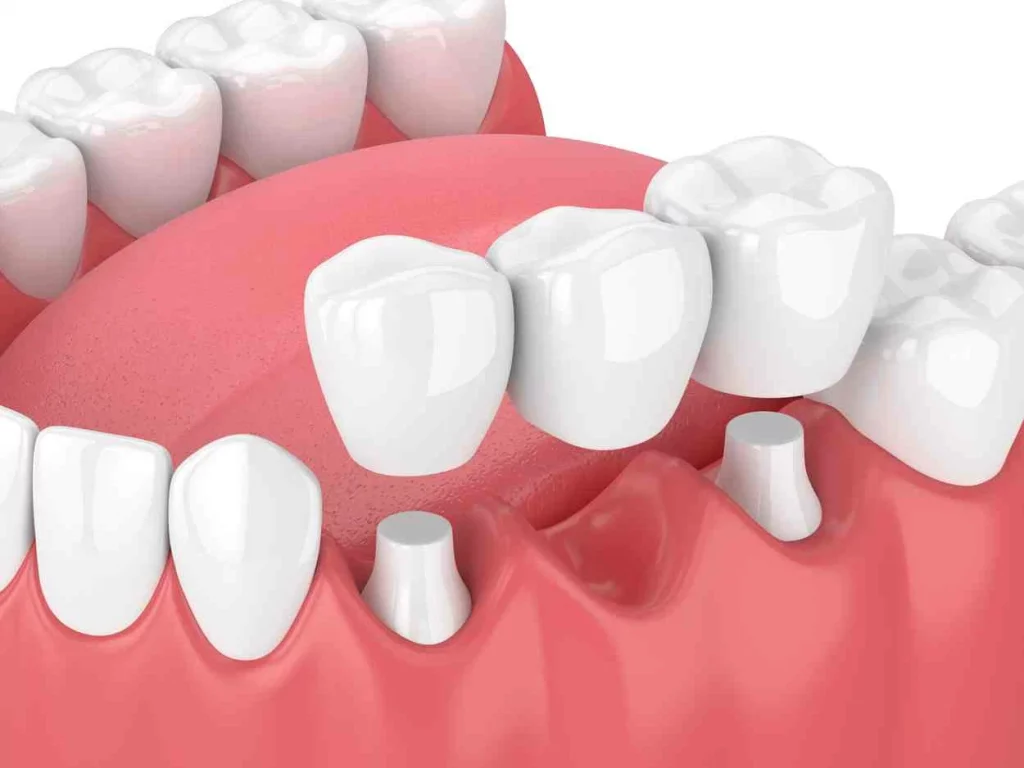
3. Indications for Crown and Bridge Restoration
Crown and bridge restoration is indicated for a variety of clinical situations, including:
3.1 Tooth Damage or Fracture
Crowns are commonly used to restore teeth that have been significantly damaged by decay, trauma, or excessive wear. When a tooth is too damaged for a filling or inlay, a crown can be used to restore its shape, function, and aesthetics.
3.2 Tooth Loss
Bridges are typically used to replace missing teeth. Whether due to decay, trauma, or congenital conditions, missing teeth can be replaced by a bridge, which helps restore function and appearance. A bridge is particularly useful when dental implants are not a viable option.
3.3 Aesthetic Concerns
For patients who have discolored or unsightly teeth, crowns and bridges can significantly improve the appearance of their smile. Porcelain and zirconia materials provide excellent cosmetic outcomes, especially for anterior teeth.
3.4 Post-Endodontic Treatment
Teeth that have undergone root canal therapy are often weakened and more susceptible to fracture. Crown and bridge restoration is frequently used to protect and restore these teeth, preventing further damage and restoring their function.
4. The Treatment Process for Crown and Bridge Restoration
Crown and bridge restoration is typically a multi-step procedure that involves several visits to the dentist. Below is a typical treatment process:
4.1 Initial Consultation and Treatment Planning
During the initial visit, the dentist will conduct a thorough examination of the patient’s oral health, including X-rays and other diagnostic tests, to assess the condition of the teeth and surrounding structures. Based on this assessment, the dentist will discuss treatment options, materials, costs, and expected outcomes with the patient.
4.2 Tooth Preparation and Impression Making
Once the treatment plan is confirmed, the dentist will prepare the tooth or teeth to receive the crown or bridge. This often involves removing a portion of the natural tooth to make room for the prosthetic. Local anesthesia is used to ensure the patient is comfortable during this procedure.
An impression of the prepared tooth and surrounding area is then taken using high-precision materials. This impression is used to create a mold for the crown or bridge. The dentist may also record the patient’s bite to ensure the restoration fits properly in the mouth.
4.3 Temporary Restoration
While the final crown or bridge is being fabricated in a dental laboratory, the patient is fitted with a temporary restoration to protect the prepared teeth and maintain function and appearance. Temporary crowns or bridges are typically made of acrylic or other materials and are worn for a few weeks.
4.4 Fabrication of the Restoration
The impressions and bite records are sent to a dental laboratory, where technicians create the permanent crown or bridge based on the dentist’s specifications. The laboratory uses materials such as metal, porcelain, or zirconia to craft the restoration, ensuring it fits accurately and matches the patient’s natural teeth.
4.5 Fitting and Adjustment
Once the permanent restoration is ready, the patient returns to the dentist’s office for fitting. The dentist will place the crown or bridge and check for proper fit, occlusion, and comfort. Any necessary adjustments will be made to ensure the restoration fits perfectly.
4.6 Final Cementation
Once the dentist is satisfied with the fit and appearance, the crown or bridge is permanently cemented into place. The patient will be given instructions on how to care for the restoration to ensure its longevity.
5. Common Problems and Solutions in Crown and Bridge Restoration
While crown and bridge restorations are generally successful, patients may experience some issues after the procedure. Below are common problems and their solutions:
5.1 Discomfort and Occlusal Issues
Some patients may experience discomfort or a misaligned bite after the restoration is placed. This may be due to improper contact between the restoration and other
teeth. The dentist can make minor adjustments to the restoration to resolve this issue.
5.2 Loosening or Dislodging of the Restoration
If a crown or bridge becomes loose or falls out, it is important for the patient to contact the dentist as soon as possible. The dentist may need to clean the tooth and re-cement the restoration, or in some cases, remake the restoration.
5.3 Tooth Sensitivity or Pain
Some patients experience sensitivity or pain after the procedure, particularly if the tooth preparation process was extensive. If sensitivity or discomfort persists, the dentist may adjust the restoration or recommend desensitizing treatments.
6. Future Trends in Crown and Bridge Restoration
As dental technology continues to advance, crown and bridge restoration methods are also evolving. Future trends include:
- Digital Dentistry: The use of computer-aided design (CAD) and computer-aided manufacturing (CAM) systems is revolutionizing the creation of crowns and bridges. These technologies enable highly precise and efficient design and fabrication processes.
- Biomaterials: New biomaterials are being developed to improve the strength, aesthetics, and biocompatibility of crown and bridge restorations. These materials aim to better mimic natural teeth and provide longer-lasting results.
- Personalized Treatment Plans: In the future, crown and bridge restoration will become even more personalized, with treatment plans tailored to the individual patient’s specific needs, taking into account factors such as tooth color, bite, and function.
7. Conclusion
Crown and bridge restoration remains an essential and effective technique in modern dentistry. It offers a reliable solution for restoring function and aesthetics in patients with damaged or missing teeth. With advancements in materials and digital technologies, crown and bridge restorations have become more precise, durable, and aesthetically pleasing. As dental techniques continue to improve, crown and bridge restorations will continue to evolve, providing patients with even better outcomes and enhanced quality of life.











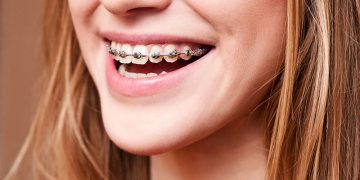
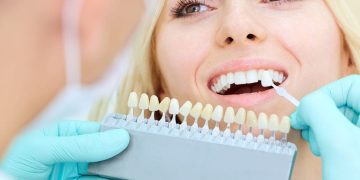





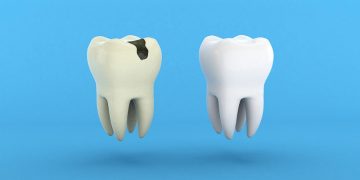






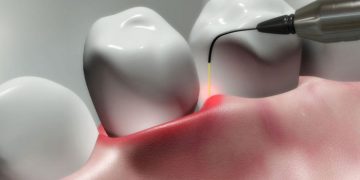


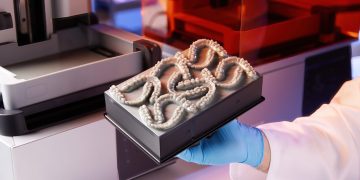

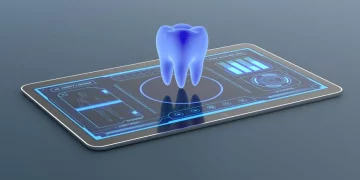
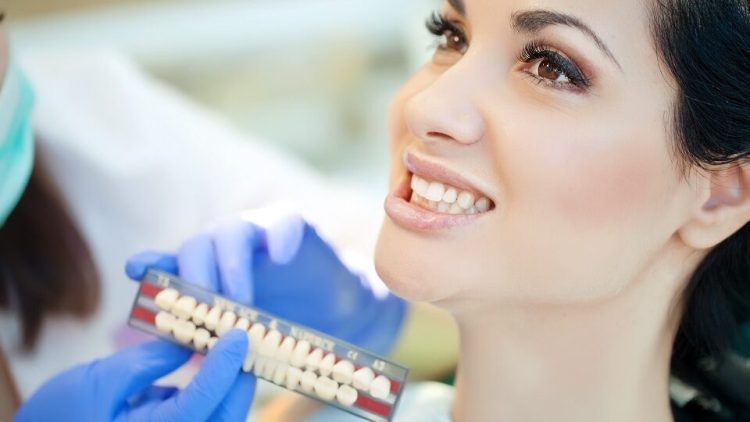













Discussion about this post